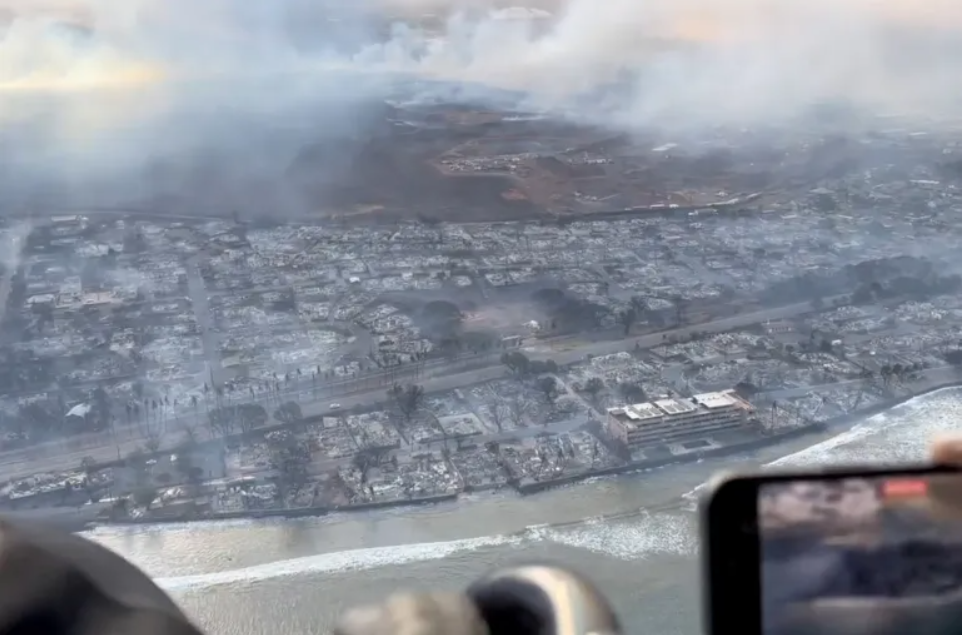(Al Jazeera Media Network) Wildfires have left a trail of destruction on the Hawaiian island of Maui, killing at least 36 people and forcing thousands to flee their homes.
The blazes, which continued to rage on Thursday, appear to have devastated the historic centre of Lahaina, the onetime capital of the former Kingdom of Hawaii.
While damage was still being assessed, witnesses said several significant sites appeared to have been consumed by the flames.
It was not immediately clear how all of the 60 historic sites in the Lahaina Historic District fared. The district encompasses more than 6,500 hectares.
Speaking to The New York Times, Theo Morrison, the executive director of the Lahaina Restoration Foundation, which manages several of the historic sites, said the speed of the encroaching fire made it nearly impossible to take any protective action.
“We had no preparation, no warning, nothing,” Morrison said. She noted that the roof of the Old Lahaina Courthouse, which held a heritage museum with ancient Hawaiian artefacts, appears to have collapsed.
Local media also reported that the Baldwin Home, built in 1834 by Reverend Ephraim Spaulding, has been destroyed. The home was the oldest still standing in Lahaina.
Photos on social media appeared to show the famous Lahaina Banyan Tree, believed to be the largest in the United States, severely singed.
Lahaina grew to prominence under King Kamehameha I, a transformational figure in Hawaiian history.
He united Hawaii under his rule, conquering smaller independent chiefdoms in Oahu, Maui, Molokai, Lanai, Kauai, and Niihau from 1795 to 1810.
In Lahaina, a coastal town framed by volcanic peaks, Kamehameha built a royal residence, known as the Brick Palace, which was one of the first western-style buildings in the Hawaiian Islands, according to the U.S. National Park Service. Lahainaluna High School became the main site of education for the kingdom’s leaders.
Kamehameha’s successors Prince Liholiho and Prince Kauikeaouli — who ruled as Kamehameha II and Kamehameha III, respectively — resided in Lahaina from 1820 to 1845, when the kingdom’s capital moved to Honululu on the island of Oahu.
Lahaina “was really the political centre for Hawaii,” Davianna McGregor, a retired professor of ethnic studies at the University of Hawaii at Manoa, told The Associated Press.
She pointed out that Lahaina played a prominent role in the kingdom’s shift from an absolute monarchy to a constitutional monarchy under King Kamehameha III.
The town became a key port with the first U.S. whaling ships arriving in 1819. Those hunting expeditions, plus the influx of Christian missionaries, brought foreigners and commercialization to Lahaina. In the following decades, many Chinese citizens relocated to Lahaina to work on sugar plantations.
After the overthrow of the Kingdom of Hawaii in 1893 and the subsequent annexation of the Hawaiian Islands by the U.S. five years later, Lahaina became one of Hawaii’s largest tourist destinations. The islands became a U.S. state in 1959.


